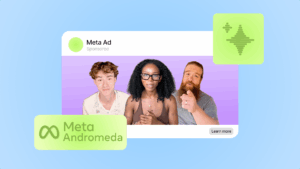Instagram vs TikTok: A Comprehensive Comparison Of Their Audience, Features & Marketing Potential
Passionate content and search marketer aiming to bring great products front and center. When not hunched over my keyboard, you will find me in a city running a race, cycling or simply enjoying my life with a book in hand.
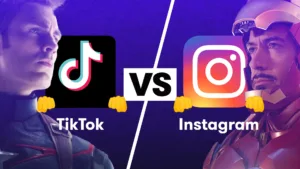
Many epic battles have raged throughout history, but few compare to the mighty conflict of Instagram vs TikTok. These heavyweights of the digital age are battling it out for supremacy, constantly upgrading their game to beat their opponents.
But which is best?
Interestingly, the answer depends on what you want. Some marketers and business owners prefer TikTok because of its audience profile while others like Instagram because of its extensive feature set.
This post explores the main differences between the platforms based on audience, demographics, and market potential (how many people you can reach). Then, we run through some helpful case studies – examples of brands using these platforms to achieve their objectives.
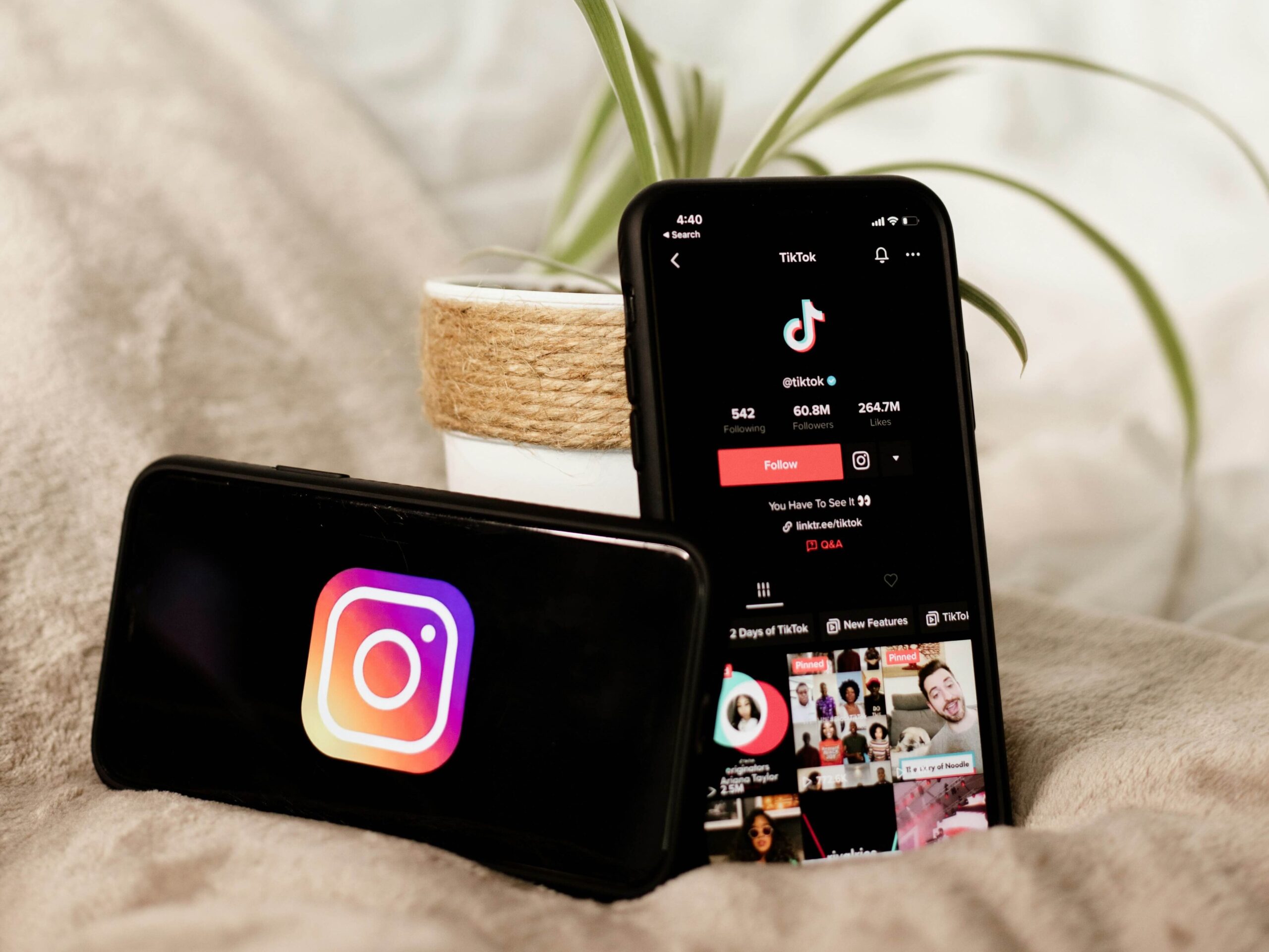
Audience Demographics: How Does It Differ Between Instagram And TikTok?
Audience demographics on TikTok differ from Instagram (though not by a huge margin). As such, the platforms reach roughly the same group of people.
The chief difference is TikTok’s slightly younger audience. It has more users in the 18-24 and 25-34 age range than Instagram (which has more older people). Therefore, TikTok is marginally better for selling products and services to younger people based on demographics.
However, we advise against reading into these differences too much. Overall, the distributions are very similar. For example, 31% of Instagram’s audience is aged 25-34 compared to 32.5% for TikTok. Likewise, 31% of its users are 18-24 years old compared to 38.5% for its Chinese rival.
Gender demographics are also similar. Figures suggest 52% of Instagram’s user base is male compared with 54% on TikTok.
However, there are significant differences in where TikTok and Instagram are available. You can use the latter in over 170 countries whereas the former is only found in 150.
Interestingly, TikTok has 170 million users in the U.S. (the market most brands care about) while Instagram only has 158 million. As such, mass-market brands may prefer the former to the latter.
Here’s a summary table of the demographic differences between TikTok and Instagram:
TikTok vs. Instagram: Demographic Summary
| TikTok | ||
|---|---|---|
| Primary demography | Under 35s | Under 25s |
| Gender distribution | 52% male | 54% male |
| Geography | Mainly in North America, Latin America, and Europe. Growing in Asia | Primarily located in Asia, including China and India. Growing in Western markets, like the US and EU |
| Usage habits | Frequent usage, but lower than TikTok | Compulsive usage more than most other social media platforms |
| Income levels | Popular among middle-income individuals: the middle class | Used across all social strata, regardless of income level |
| Primary content creators | Millennials and Gen Z | Primarily Gen Z with a few Millennials |
| Content type | Travel, fitness, food and fashion | Meme-related content, dance, singing, comedy |
Key UGC statistics you should know in 2025
Given these differences, businesses must carefully consider which platform to use.
Prioritizing TikTok is better if:
- Your primary audience is under 25 (Gen Z)
- Your content plan involves short, snappy content that grabs attention and aims to go viral
- Your main focus is in Western markets or Asia
- Explore TikTok influencer rates
Likewise, Instagram is better if:
- You want to target Millennials
- Your content plan demands a mix of photos and videos with captions
- Your main audience is in the US, Europe, and Latin America
- Explore Instagram influencer pricing
Who Offers The Best Features? Instagram Vs TikTok
Superficially, Instagram and TikTok appear similar. Both are visual social networks prioritizing videos and images over written posts. However, the differences become significant when you drill into the details.
1. Post Types And Formats
TikTok and Instagram differ in post types and formats. However, TikTok’s offering is more simplistic.
For instance, both platforms offer feed posts. On Instagram, they come in photo, video, and carousel format, while on TikTok, they are short-form videos (up to 3 minutes apiece).
Both also offer Reel-type experience – short-form videos with editing tools and, in TikTok’s case, an extensive editing library of effects. There’s also livestreaming on both platforms (with the option of giving digital gifts on TikTok).
However, TikTok’s formats aren’t as extensive. For example, you don’t get 24-hour disappearing photos and users can’t upload long-form 60-minute videos (which are both available on Instagram).
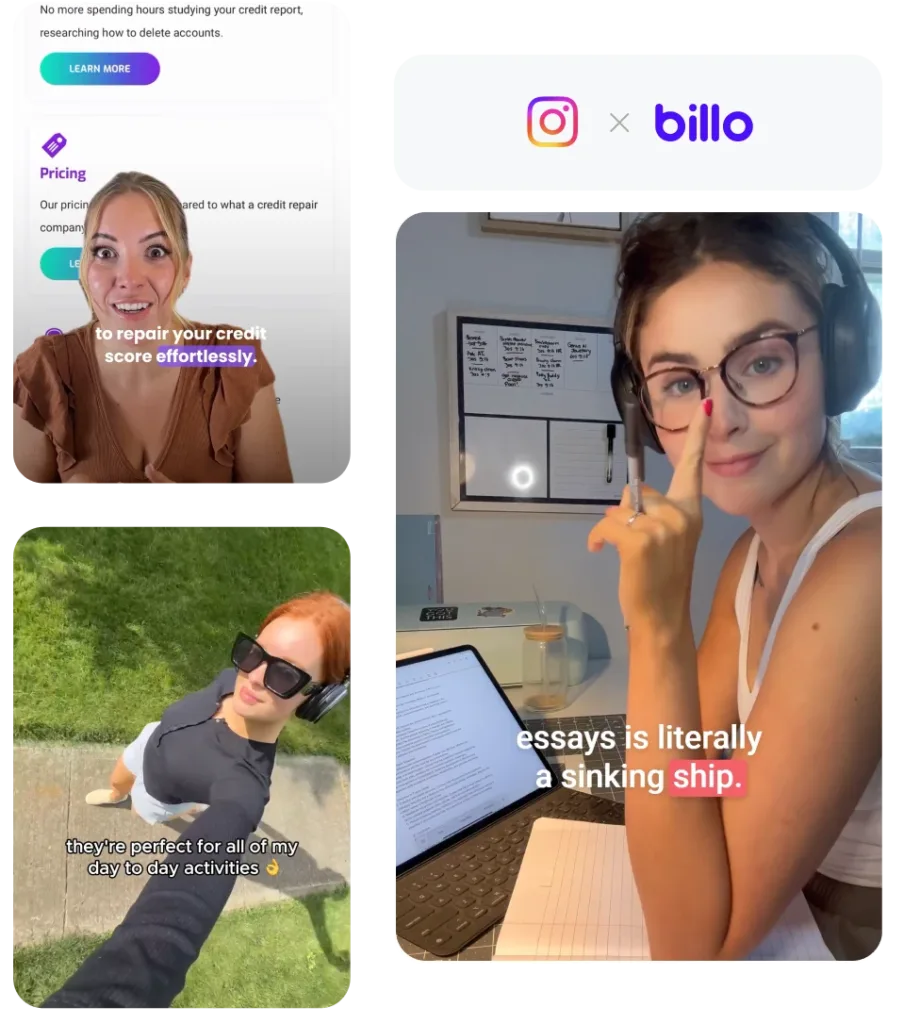
2. Content Discovery
Content discovery also differs significantly between platforms. Instagram has an “Explore Page” that users can leverage to find compelling content and train the platform’s algorithm to cater to their preferences. Meanwhile, TikTok has personalized content recommendations created from user interaction on its “For You Page.”
Hashtags and trends also appear on each platform but under different guises. For TikTok, trending content comprises a significant chunk of its algorithm (and is why the platform has so much viral content). Meanwhile, on Instagram, users get a personal feed with trends discoverable through the Explore Page and posts.
3. Marketing Tools
Marketing tools also differ substantially between TikTok and Instagram. However, both have pretty beefy offerings.
For ad formats, Instagram allows photos, videos, Stories ads, Shopping ads, and carousel features (More on this later). By contrast, TikTok focuses more on in-feed and TopView ads.
Both also have facilities for influencer collaborations and user-generated content (UGC) marketing. TikTok provides features via its Creator Marketplace while Instagram does it through Instagram For Creators.
As for analytics, Instagram has the edge. TikTok offers some features (for premium accounts) but doesn’t provide as much depth. Meanwhile, brands can benefit from comprehensive demographic data and reach metrics on Instagram.
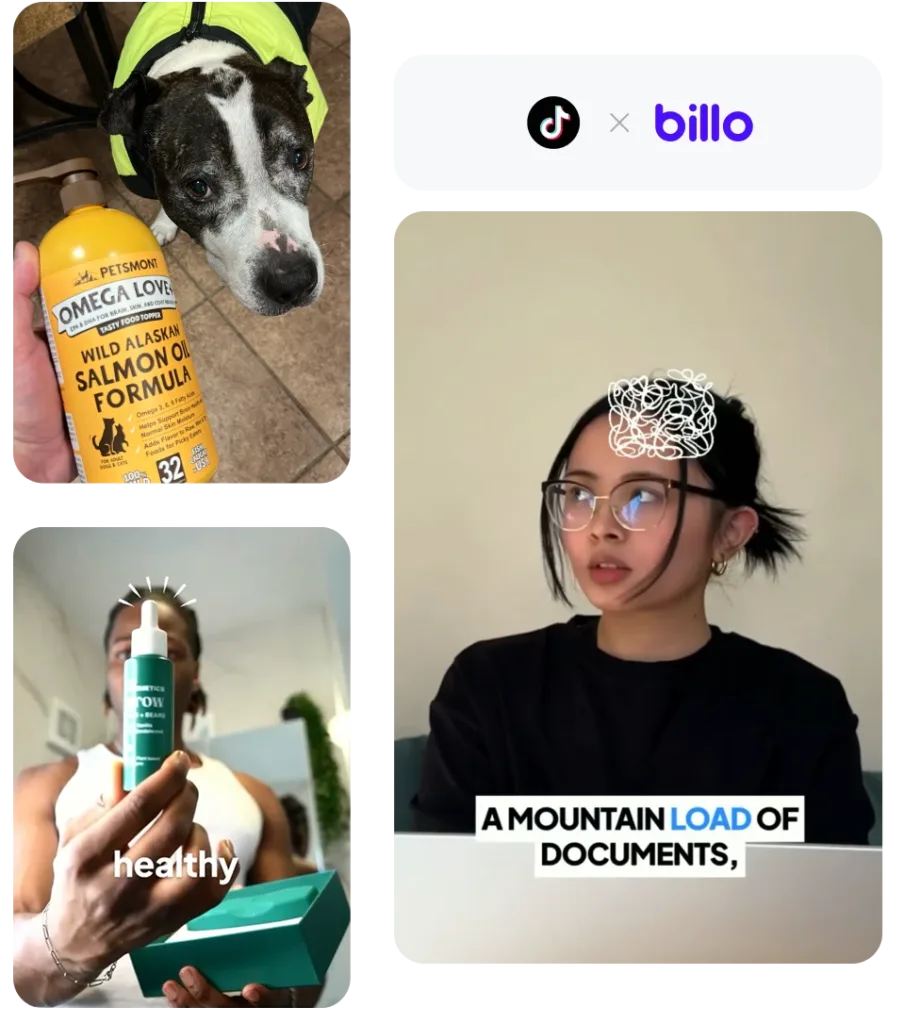
4. Content Creation And Editing
When it comes to content creation and editing, TikTok is slightly ahead. The platform offers extensive editing tools, filters, and effects unavailable on Instagram. (These partly explain the Chinese social media giant’s rocketing success among users). It also has a music library of fun songs for people to dance and mime.
By contrast, Instagram’s in-app editing in Reels and Stories is fairly rudimentary. Users can have some fun, but not as much as on TikTok. There is limited music integration and the sound effects library is smaller.
5. Content Creation
Flipping the other way, Instagram has the advantage of flexible content creation. It offers the ability to save and label posts in Collections and save Stories in Highlights for archival purposes. TikTok doesn’t have these features.
Furthermore, brands on Instagram focus more on building a visual presence. The platform demands companies and marketers invest time and effort in their aesthetics to stand out.
TikTok concerns itself more with viral content. It isn’t as concerned with the visual quality of posts.
For example, travel and luxury brands prefer Instagram because of its focus on polish and presentation. By contrast, music companies and service operators use TikTok more because of its ability to put a fun spin on everyday businesses.
6. Engagement
Finally, Instagram and TikTok differ in audience engagement and interaction features. Both allow direct messaging but diverge in other areas.
For example, TikTok has duetting and stitching features that give creators more options. Duets allow them to sing or dance side-by-side with another video, while stitch lets them start discussions about the video’s subject matter or answer a prompt.
TikTok also lets users buy and send virtual gifts to each other (a form of monetization). These are cute additions to the conversation that improve social interactions on the platform.
While Instagram doesn’t have these features, it still has some tricks. For instance, Stories has polls and question features where creators can canvas their audience and measure their opinions.
It also has helpful group chat features (as you might expect from a Meta Platforms company). These allow brands to speak with multiple customers at once (making focus groups easy to arrange).
Looking to boost your ad effectiveness? Here are the UGC trends to follow on TikTok.
Marketing Potential: The Difference Between TikTok and Instagram
Ultimately, marketing potential is what brands care about most. Even if a platform has impressive features, it doesn’t matter if it can’t deliver results.
Engagement Rates
Why is TikTok better than Instagram for brands? Arguably, it comes down to its higher engagement rates. Figures suggest that it outperforms Instagram in some segments in the U.S.
For example, the average engagement rate for Instagram Reels is 6.59% on accounts with 100,000 to 500,000 followers on Instagram, while it is 9.74% on TikTok. Moreover, even for accounts with more than 10 million followers, engagement rates are 8.77% and 10.52% respectively – still a significant gap.
With that said, TikTok focuses more on views, so higher engagement rates are normal. Instagram focuses more on acquiring followers, so brands wanting to build tight-knit communities might prefer it.
Interestingly, TikTok and Instagram perform better than YouTube Shorts – the other significant short-form video platform.
Advertising Options
On the contrary, why is Instagram better than Tiktok for marketing? One reason is the higher number of ad options.
Instagram ads include:
- Image Feed Ads – ads that appear as single images in the native experience (blending into the rest of the content)
- Image Story Ads – ads that appear in the Stories feed (helping brands generate traffic and conversions)
- Video Feed Ads – video ads that appear in the main user feed
- Video Story Ads – video ads that appear in Stories
- Carousel Feed Ads – status ads that appear as scrollable images in Instagram’s carousel
- Canvas Story Ads – immersive 360-degree virtual reality ads (VR) supported on numerous mobile devices
This optionality gives marketers more choice than ever, allowing them to appeal to users in unique ways. Brands can instill ads with their personalities, as they see fit. Learn more about partnership vs brand ads.
UGC platform for Instagram video ads
TikTok also offers ads in multiple formats. However, the options aren’t quite as extensive.
- In-Feed Ads – ads that appear in the user’s feed (and blend like regular content)
- TopView ads – ads that appear at the top of the For You feed offering the same interactivity features as user-generated content
- Brand Takeover ads – ads that show stationary or dynamic images to users across their entire screen
TikTok also has a feature called Branded Hashtag Challenge. It’s not an ad per se, but it gets users to create content with brand imagery and share it on the network (usually as part of a vital campaign).
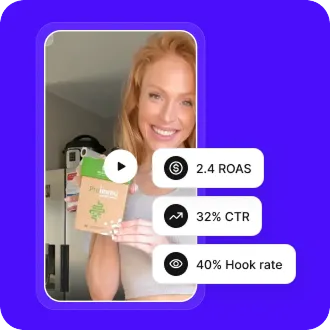
Explore the Latest TikTok Ad Trends
Case Studies Of Brands Using Instagram And TikTok
Numerous brands use TikTok and Instagram. But some of the names that are leveraging these platforms might surprise you – they aren’t always who you would expect.
Dove – Instagram
Dove is a master of social media marketing (and was doing well even before the advent of these networks). It recently jumped on the women’s self-esteem trend with an ad focusing on the type of content women are consuming online. The marketing speaks out against the constant exposure to filtered images and how they warp beauty standards beyond recognition.
IBM – Instagram
IBM isn’t the first company you’d imagine being on Instagram. But it also leverages the platform to share its message.
The main purpose of the company’s outreach on the platform is to highlight its consistency. That’s why it chose to center its outreach around images of the company loading massive mainframe computers onto trucks in the 1950s. The message is clear – IBM was a force in the past and remains one to this day.
Adidas
Not to be left behind, Adidas is another brand using Instagram to share its message online. Recently, the company used the platform to highlight its #WithWomenWeRun campaign after learning that 92% of women feel unsafe while jogging outdoors. Posting about this statistic helped the brand commit to its policy of raising awareness of the issue and how it is fighting it.
Wet n Wild – TikTok
Wet n Wild used TikTok’s community effectively to launch a new mascara range. The company worked with JVKE (one of the platform’s top influencers) to create a soundtrack that would send women customers crazy.
The campaign was enormously successful and garnered over 1.5 million video creations showing users using the new product. It also generated a 9.6% increase in brand awareness from the company – a massive boost from a single campaign.
Gymshark – TikTok
Gymshark is another TikTok success story. The company used the platform to push sales of its sports and athleisure clothing, using the social network’s highly visual content.
Its primary aim was to construct a fan-led community that would support its brand with user-generated content. And it knew it had to do this because of fierce competition from the likes of Adidas and Nike.
Ultimately, the brand was wildly successful and grew its TikTok followership to an impressive 3.7 million. It also gained 57 millions likes, all by getting fans to do most of its content creation for it.
Continue learning:
SEO Lead
Passionate content and search marketer aiming to bring great products front and center. When not hunched over my keyboard, you will find me in a city running a race, cycling or simply enjoying my life with a book in hand.
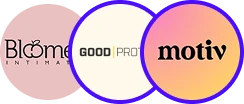
Authentic creator videos, powered by real performance data
22,000+ brands use Billo to turn UGC into high-ROAS video ads.
The Ultimate Content Pipeline for Ads: Never Run...
Automated ad platforms have made targeting, bidding, and optimization almost [...]...
Read full articleMeta Andromeda Update Explained: Creative Volume...
Meta Andromeda update marks a major shift in how ads [...]...
Read full articleFrom Barbie to Duolingo: Social Media Marketing ...
Inspiring social media marketing campaigns help marketers push beyond performance metrics and [...]...
Read full article


